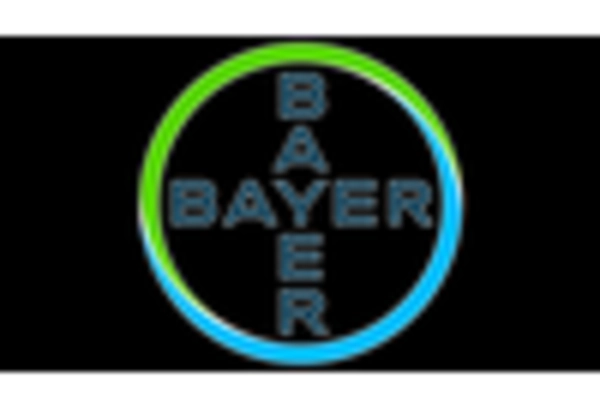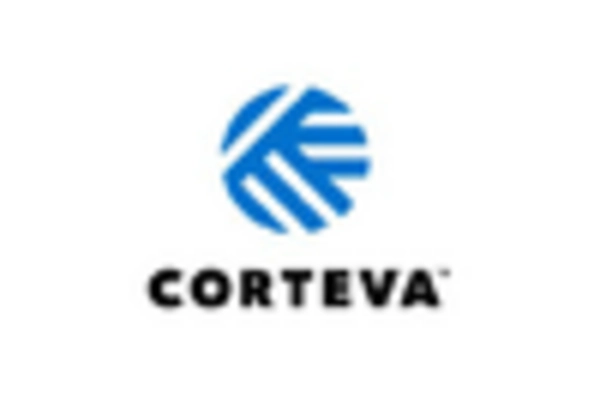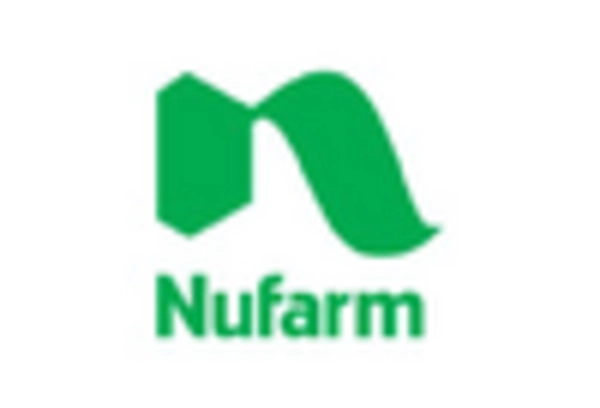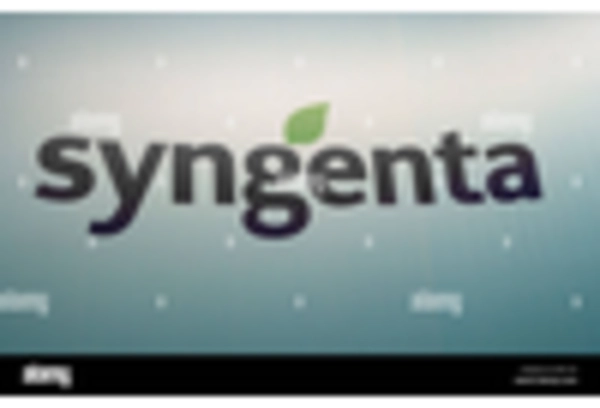Increased Awareness of Plant Health
There is a growing awareness of the importance of plant health among farmers and agricultural stakeholders, which is driving the SDHI Fungicide Market. This awareness is leading to a shift in focus from traditional pest control methods to more sophisticated fungicide solutions. As a result, the market for SDHI fungicides is projected to expand, with an estimated growth rate of 6% annually over the next five years. Farmers are increasingly recognizing that maintaining plant health is crucial for maximizing yields and ensuring quality produce. This trend is likely to encourage the adoption of SDHI fungicides, which are known for their targeted action and lower environmental impact compared to conventional fungicides. The SDHI Fungicide Market is thus poised to benefit from this heightened emphasis on plant health.
Integration of Precision Agriculture
The integration of precision agriculture techniques is significantly influencing the SDHI Fungicide Market. Precision agriculture employs advanced technologies such as GPS, IoT, and data analytics to optimize farming practices. This approach allows for targeted application of fungicides, reducing waste and enhancing effectiveness. As farmers adopt these technologies, the demand for SDHI fungicides is likely to increase, as they are compatible with precision application methods. The market is expected to witness a compound annual growth rate (CAGR) of 5% through 2027, driven by the need for efficient resource management. Consequently, the SDHI Fungicide Market stands to gain from the growing trend of precision agriculture, which emphasizes sustainability and cost-effectiveness in crop protection.
Advancements in Research and Development
Advancements in research and development are propelling innovation within the SDHI Fungicide Market. Ongoing research efforts are focused on developing new formulations and improving the efficacy of existing products. This is particularly relevant as the agricultural sector faces challenges from emerging fungal strains that exhibit resistance to traditional fungicides. The SDHI fungicides are being refined to enhance their performance and broaden their spectrum of activity. The market is expected to see an influx of novel products, with R&D investments projected to increase by 10% annually. This focus on innovation is likely to strengthen the position of the SDHI Fungicide Market, as new and improved fungicides become available to meet the evolving needs of farmers.
Rising Demand for Crop Protection Solutions
The increasing need for effective crop protection solutions is a primary driver of the SDHI Fungicide Market. As agricultural practices evolve, farmers are seeking advanced fungicides to combat various plant diseases. The market for fungicides is projected to reach USD 20 billion by 2026, with SDHI fungicides playing a crucial role in this growth. These products are favored for their efficacy against a broad spectrum of fungal pathogens, which is essential for maintaining crop yields. Furthermore, the rising global population necessitates enhanced agricultural productivity, thereby propelling the demand for innovative fungicides. The SDHI Fungicide Market is thus positioned to benefit from this trend, as farmers increasingly adopt these solutions to ensure food security and sustainable farming practices.
Regulatory Support for Sustainable Practices
Regulatory support for sustainable agricultural practices is a significant driver of the SDHI Fungicide Market. Governments and regulatory bodies are increasingly promoting the use of environmentally friendly agricultural inputs, including fungicides. This support is evident in the formulation of policies that encourage the adoption of sustainable crop protection methods. As a result, the SDHI fungicides, which are designed to minimize environmental impact while effectively controlling fungal diseases, are gaining traction. The market is likely to benefit from these regulatory frameworks, which may lead to increased funding for research and development of sustainable fungicides. The SDHI Fungicide Market is thus expected to thrive as it aligns with the global push towards sustainable agriculture.


















Leave a Comment